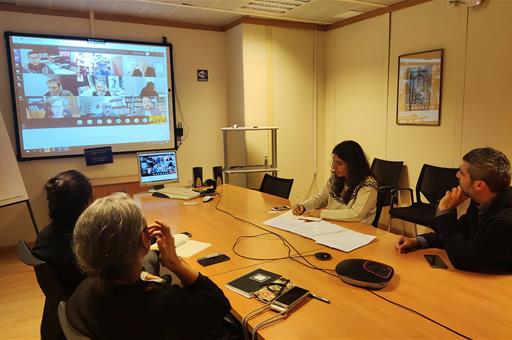The cooperation project between Spain and Ibero America concerning the frigate Nuestra Señora de las Mercedes is taking its first steps
News - 2022.12.15
On Wednesday 14 December, the first working meeting was held to launch the cooperation project between Spain and several Ibero American countries concerning the frigate Nuestra Señora de las Mercedes. Technicians from five of the countries involved (Mexico, Chile, Peru, Bolivia and Spain) held a first meeting to specify the steps to be taken in the coming months, with the aim that the exhibition project concerning the frigate will see the light at the end of 2023 at the National Museum of Underwater Archaeology in Cartagena (Murcia, Spain), and then travel to the other countries.
During the UNESCO World Conference on Cultural Policies and Sustainable Development (Mondiacult), which took place in Mexico City last September, the Minister for Culture and Sport, Miquel Iceta, held a series of bilateral meetings with his counterparts from Mexico, Peru, Chile, Colombia, Bolivia and Uruguay, to propose a joint line of work with the aim of setting up an exhibition on the history of the ship and its cargo.
Iceta defended the need for collaboration between the countries involved so that, through cooperation and understanding between Latin America and Spain, common history and culture can be enhanced. To this effect, a joint museographic project is being promoted, with the aim of creating a shared and travelling exhibition. The collection of materials recovered from the wreck evokes a specific era when political, commercial and cultural relations between Spain and America were very close. These connections between the countries linked to this discovery continue today, and allow the development of this joint project based on their cooperation and collaboration.
Specifically, the places where the frigate docked during its last voyage were El Callao (Peru) and Montevideo (Uruguay). It is estimated that the vast majority of the money transported was minted at the Royal Mint in Lima (Peru). The mints of Potosí (Bolivia) contributed the next largest amount. There are also pieces from the mints of Popayán (Colombia), Mexico and Santiago de Chile.
Non official translation





